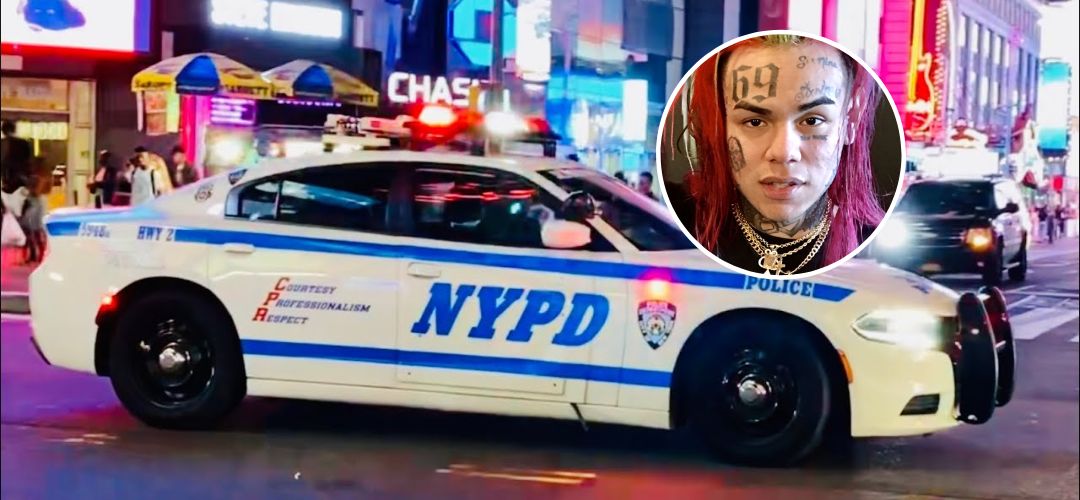
Tray Nova is a Chicagoland native and NYC-based creative who continues to push boundaries and innovate as a musician.
Blending heavy influences from different genres of the old and new school, Tray is a student of the game who uses his lyricism to tell stories of his real-life experiences.
His latest single, ‘children of ra,’ featuring Kas celebrates Black love and culture, using the Egyptian sun god Ra as the symbol of inner light.
In an interview with Kulture Hub, we explored what makes Tray Nova so unique, how he got his start in music, and his journey to finding himself as an artist.
Tray Nova’s early influences.
Growing up in a church-going environment, Tray Nova listened to a lot of gospel music. At home, his mother played various RnB and Neo Soul singers such as Mary J. Blige, D’Angelo, Erykah Badu, Maxwell and others.
These diverse sounds sparked his interest in creating rhymes and melodies at a young age.
As he moved on to middle school and high school, he started writing rap with his cousins. He cites 50 Cent, Kanye West, Jay Z, T.I., Nas, Lupe Fiasco, and Lil Wayne as his influences at that time.
From Gospel, Neo Soul and Hip Hop, these genres shaped my early years which inspired me on my journey to explore music deeper.
– Tray Nova (2022)
Tray Nova continues to be one of the most innovative musicians working today.
Nova began his career in Chicago and has since expanded his career to Los Angeles, Honolulu, and New York City.
As an artist, he is not afraid of wearing his influences on his sleeve. He incorporates a lot of the genres he grew up with in his music, as well as taking inspiration from past eras such as the ’70s, ’90s, and ’00s.
His overall sound reflects the energy of both the old and the new school.
He’s also not afraid of taking chances and branching out to new environments. He believes the like-minded individuals he’s met have helped him grow as an artist.
Although, Tray Nova finds his unique style by sharing his personal experiences and expressing himself authentically. He constantly switches up from bravado raps to introspection and smooth melodies, balancing these elements through lyricism.
His acceptance of external influences has allowed him to continuously produce deep and insightful music.
Likewise, Nova advises other young aspiring artists to keep learning from others and adopt new influences.
Never be afraid of change because that’s the only way growth can happen.
– Tray Nova (2022)
Hitting Pause.
During a rough period, Nova decided to quit music for some years.
A single epiphany moment being back on stage in his hometown ignited his passion again. Since then, he has been on a steady journey to create and inspire others with his music.
Through talent and determination, he amassed a dedicated fanbase and has shared the stage with prominent figures within the music industry such as Chance the Rapper, Mac Miller, The Internet, Dreezy, and more.
I believe you have to go through many ups and downs to realize what you are doing is something you truly want in life.
– Tray Nova (2022)
‘Children of Ra’ explores inner light and love.
The Chicago-born artist believes that within every person is a light that can illuminate the darkness we go through in life.
In his new single “children of Ra”, Nova focuses on the light shared between two lovers as it narrates the complexities of romantic relationships and inner struggles.
While celebrating Black love and culture, the single uses the Egyptian sun god Ra as the symbol of inner light.
“children of ra” features Kas, a St. Louis native, NYC-based artist, and frequent collaborator.
In their new music video co-directed by Kas and the Emmy-award winning director ManuallFocus, which debuts today, captivating scenes were captured with an all-Black cast throughout Washington Square Park and Williamsburg Brooklyn.
Professional dancer and co-star of the video Gigi Jones adds to the visual storytelling that evokes feelings of nostalgia and appreciation for the beauty of love and life, you can watch it here now!
Watch Tray Nova’s new video for “children of ra” featuring Kas!
Nova tells his fans to expect a new project in Spring 2023, which he has been working on throughout this year. We can also expect more performances in different cities.
In the meantime, fans can also check out other artists in Nova’s collective The 2ill Collective which consists of creatives and 2ill Entertainment is the show booking/event division.
With ‘children of ra,’ Tray Nova continues to prove that he’s one of the most innovative musicians working today.
He’s not afraid to take risks and embrace change in order to evolve as an artist. I can’t wait for what comes next from Tray Nova – and hopefully other artists too!
To learn more about Tray Nova head over to his site!







![Public Enemy: [Left to right] Flava Flav, Terminator X, Chuck D, DJ Lord. get to the polls](https://kulturehub.com/app/uploads/2020/10/2871-1024x768.jpg)
![Tupac Shakur [2Pac] get to the polls political music](https://kulturehub.com/app/uploads/2020/10/970707_ra466-1024x768.jpg)





